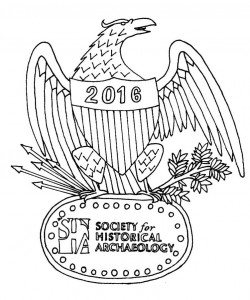Response to Eric Cantor and Lamar Smith
Many of you know that Representatives Eric Cantor (R-Virginia) and Lamar Smith (R-Texas) last week…
 Greetings from Virginia! Though the #SHA2016 Annual Meeting is some months away, we are assisting the social media committee in presenting the archaeological outlets that the Washington, DC metro area has to offer. Archaeology plays a major role towards interpreting George Washington’s Mount Vernon, and we are pleased to take this opportunity to briefly introduce our program and some of our recent projects.
Greetings from Virginia! Though the #SHA2016 Annual Meeting is some months away, we are assisting the social media committee in presenting the archaeological outlets that the Washington, DC metro area has to offer. Archaeology plays a major role towards interpreting George Washington’s Mount Vernon, and we are pleased to take this opportunity to briefly introduce our program and some of our recent projects.
George Washington called Mount Vernon home for 45 years, and though two wars and a Presidency often called him away from his estate, Mount Vernon was his life’s work. Washington transformed a modest farm house into the mansion we see today, significantly altered the grounds around his homelot to create a formalized ornamental landscape, and successfully farmed an 8,000 acre plantation. A period of estate decline following Washington’s death in 1799 sparked a nation-wide effort to preserve Mount Vernon, spearheaded by the Mount Vernon Ladies’ Association (MVLA) who bought the mansion house and the surrounding 200 acres in 1858.
While archaeological investigations at Mount Vernon have occurred since the 1930s, the majority of collections are from the professional archaeology program established in 1987 and a survey of the property conducted in 1984 and 1985. Excavations have yielded over a million artifacts providing a rich assemblage to study the intertwined lives of the plantation community: enslaved individuals, hired white workers, and Washington family members. Since the department’s inception we have excavated significant sites within Mount Vernon’s historic core including the south grove midden, a large concentration of trash associated with the Washington family from c. 1735–1765, and the House for Families cellar, the main slave dwelling used from c.1760—1793 located at Washington’s Mansion House Farm. Archaeological excavation and research has contributed to the re-discovery and reconstruction of George Washington’s whiskey distillery, a major operation which may have been the largest one of its kind in the United States by the close of the 18th century.
Our archeology team is part of the Preservation Division of the larger Mount Vernon Department of Historic Preservation and Collections. Esther White directs our division, with archaeological fieldwork under the supervision of Deputy Director for Archaeology Eleanor Breen and Assistant Director for Archaeological Research Luke Pecoraro. Karen Price is our lab manager and photographer, and Leah Stricker serves as the field crew chief. Within the division is Deputy Director for Architectural History Thomas Reinhart, assisted by his staff of architectural conservator Steve Stuckey, and preservation technicians Elizabeth Rival and Caroline Spurry. Our staff also includes Eric Benson, who manages our GIS and viewshed preservation efforts. With our small staff we work together to fulfill the goals of our department to maintain, research, and manage the valuable historic resources at Mount Vernon.
Current fieldwork will return us to the south grove this summer to fully investigate the transformation of the space form a work yard to a formal landscaped area, and we will continue an ongoing program of public archaeology in the estate’s slave cemetery. Our survey of the slave cemetery is an attempt to better understand the layout and number of individuals interred in a plot located just 200 feet south of the Washington family tomb. Our field and labwork keeps us busy year-round, and we regularly post updates via our FaceBook page—Historic Preservation at Mount Vernon—and invite you to follow us. An intensive evaluation of the finds from the south grove midden including high-quality artifact photographs was launched in web form recently and can be viewed here: http://www.mountvernonmidden.org/. Our website provides a great resource for these sites and programs in addition to the other activities going on at Mount Vernon: http://www.mountvernon.org/research-collections/archaeology/.For those of you who want to join us in the field this summer, check out our field school in historic preservation – http://www.mountvernon.org/research-collections/archaeology/volunteer-or-intern-with-the-archaeology-team/.
Famed 19th-century orator Edward Everett once remarked “A visit to the National Capital is but half made unless it includes the home and tomb of Washington.” When you make the trip to attend next year’s annual meeting, we hope that you will take some extra time for a visit to George Washington’s Mount Vernon.